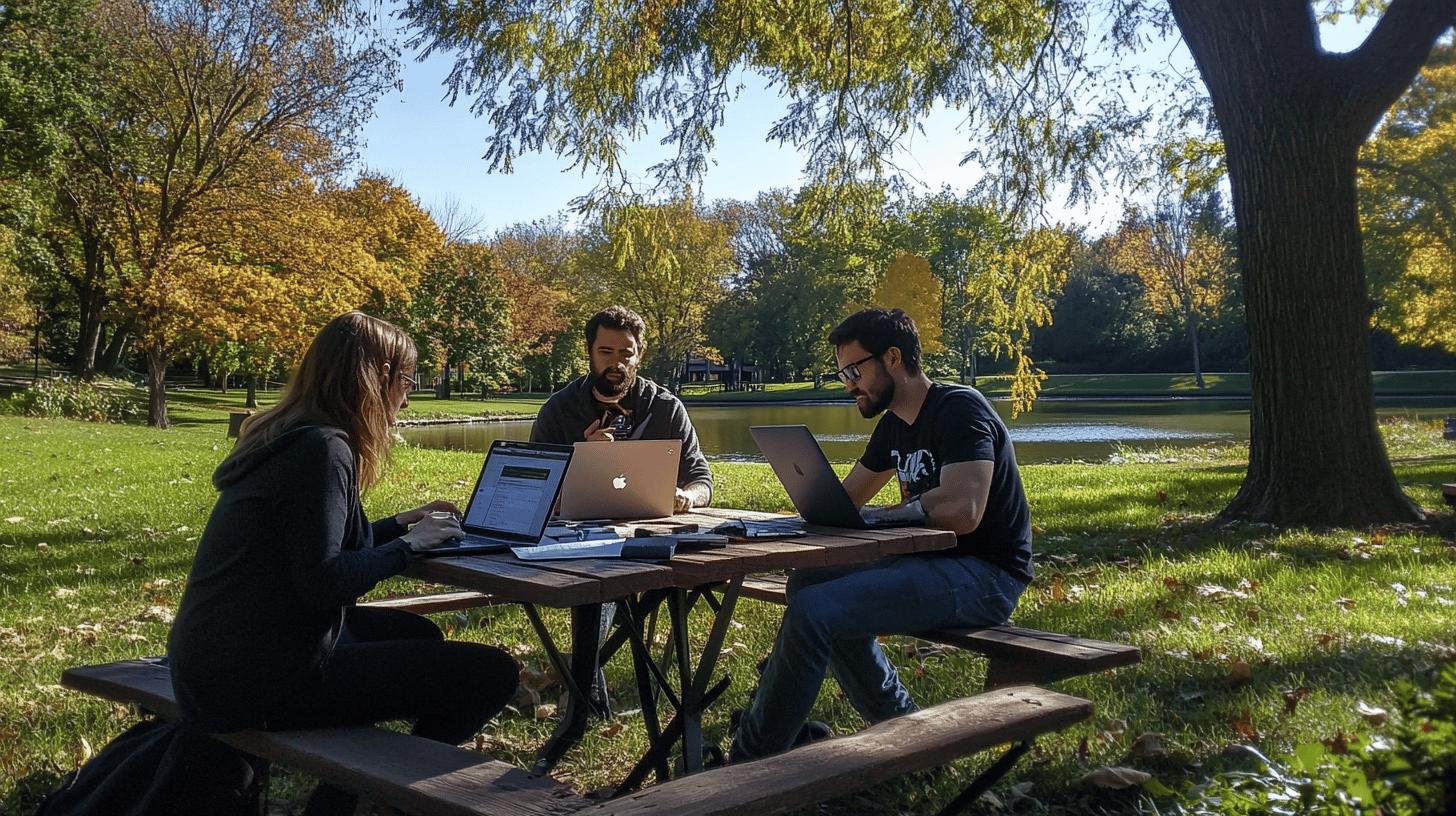Effective community participation lies at the heart of meaningful connections and progress.
In today's connected age, mastering community engagement is crucial for building genuine relationships and fostering a sense of belonging. To succeed, one must understand the diverse needs and obstacles faced by community members, appreciating the unique dynamics at play.
By adhering to best practices, individuals and organizations can amplify their impact and cultivate inclusive environments. Key elements in successful engagement include:
These principles ensure that everyone feels valued and heard, creating a collaborative space where voices matter. Embracing these practices lays the groundwork for thriving communities built on trust, transparency, and shared goals.
.png)
Community engagement is a fulfilling endeavor that centers on involving individuals in meaningful ways to foster shared goals and social change. At its essence, community engagement is about creating a vibrant space where diverse members contribute their ideas, resources, and experiences to shape collective outcomes. Successful engagement begins with understanding the unique needs and challenges faced by community members. This understanding serves as the backbone for strategies that resonate and encourage active participation.
Clear and effective communication is crucial in building trust and transparency within communities. It supports a safe and trustworthy environment where members feel heard and valued. Genuine input from local stakeholders is central to ensuring that engagement efforts reflect the community’s priorities rather than top-down assumptions. By incorporating diverse perspectives, organizations can design initiatives that are inclusive and responsive, continuously adapting to evolving needs.
Best practices for community engagement emphasize a collaborative approach that nurtures mutual respect and continuous interaction. Strategies must remain adaptable to shifts in community dynamics and feedback, ensuring long-term relevance and impact. Platforms like Journey support these principles by providing a robust hub for communication, organizing discussions, and enabling seamless connections that align organically with members' interests.

Creating a detailed engagement plan is crucial for fostering sustained community involvement and genuine participation. Such a plan outlines clear strategies, ensuring that every action aligns with the community’s shared vision and goals. It integrates stakeholder analysis, objective setting, budgeting, and resource allocation to guide efforts with precision and focus. Leveraging research-backed data within the plan can encourage member buy-in and enhance participation by demonstrating the value and impact of engagement.
A comprehensive engagement plan consists of actionable steps that help organizers maintain momentum and adapt as needed. Here are five essential steps to develop a robust plan:
Engagement is dynamic. Regularly evaluate progress using feedback and data to refine strategies, address emerging challenges, and seize new opportunities for deeper involvement.
The Journey app enriches this engagement process by serving as an integrated hub where community owners can organize planning and communication seamlessly. Its customizable features allow for tailored onboarding, clear role assignments, and ongoing interaction through group chats and community feeds. Journey’s AI Sidekick further supports strategic planning by providing personalized insights, automating moderation, and recommending content that keeps members engaged and connected over the long term. This blend of tools ensures plans are not only well-crafted but also effectively implemented and continuously nurtured.

Digital tools are essential in expanding community outreach and fostering meaningful interaction among diverse groups. Online and hybrid engagement strategies allow communities to connect beyond physical boundaries, making participation more accessible and flexible. To be effective, these strategies must address the hesitations and barriers some members face, such as digital literacy or trust concerns, by offering clear guidance and welcoming environments. Utilizing research-backed data helps tailor outreach efforts to resonate with varied demographics, increasing the likelihood of sustained involvement.
A vibrant online community thrives on formats that encourage real-time interaction and collaboration. Interactive webinars and virtual meet-ups provide dynamic spaces for dialogue and shared learning, while social media techniques amplify reach and engagement through targeted content and conversations. Incentivizing participation through rewards or recognition programs motivates members to contribute consistently. Equally important are regular feedback loops, which inform organizers about members’ needs and preferences, allowing for continuous adaptation and improvement of engagement tactics.
The Journey app serves as a robust hub for online community engagement by offering a seamless blend of digital networking and real-time feedback tools. Its customizable community feeds and group chats create safe, trustworthy spaces for focused discussions and resource sharing. Journey’s AI Sidekick elevates engagement by automating moderation, curating relevant content, and facilitating personalized member onboarding. These features collectively enhance discoverability, enrich interactions, and support long-term community growth in a well-maintained, secure environment.

Meaningful engagement transcends simple outreach; it requires active, ongoing participation that fosters genuine connections within the community. Communities driven by their own members tend to build higher trust and achieve long-term benefits. This approach creates a fulfilling environment where individuals feel empowered to contribute their ideas, resources, and experiences toward shared goals. By focusing on sustained involvement, organizations can build a vibrant culture of mutual respect and collaboration.
Effective engagement techniques center on inclusivity and responsiveness. Using inclusive consultation methods ensures diverse voices are heard and valued, creating richer discussions and better-informed decisions. Consistent and accessible feedback channels keep the dialogue open, allowing community members to express concerns and suggestions transparently. Visible leadership and role models within the community further inspire participation, setting a tone of accountability and shared purpose. Adaptable tactics that address specific community needs enable organizers to respond swiftly to changing dynamics and emerging challenges.
Journey supports these meaningful engagement techniques by providing a seamless hub for real-time community discussions and personalized engagement strategies. Its group chats and community feeds serve as safe, trustworthy environments where members can interact, share updates, and collaborate effortlessly. Journey’s AI Sidekick enhances this experience by offering tailored onboarding, moderating content, and recommending relevant resources, ensuring that every member’s journey is supported and that engagement remains vibrant and focused over time.
.png)
Community engagement often falters when it adopts a top-down approach that leaves local voices unheard. This method can create barriers to genuine involvement and stifle the rich exchange of ideas and experiences essential for lasting impact. To overcome this, organizations must prioritize authentic collaboration by actively inviting input and leadership from diverse community members. This shift fosters a sense of belonging and ownership, which is crucial for sustained participation and trust-building. Addressing reservations is another critical step in overcoming engagement hurdles. Many individuals hesitate to participate due to past experiences, fear of exclusion, or uncertainty about how their contributions will be valued. Transparent communication that openly acknowledges these concerns helps dismantle skepticism. Sharing measurable outcomes and progress updates builds credibility, showing that community input truly shapes decisions and drives tangible change. Equally important is the inclusion of underrepresented and marginalized groups, whose perspectives are vital for equitable solutions and enriching the community’s collective wisdom.
Building trust requires continuous, two-way communication in a safe and trustworthy environment. Platforms like Journey exemplify effective engagement by providing a robust hub where members can interact seamlessly and securely. Journey’s AI Sidekick supports this process by facilitating personalized onboarding, moderating content to maintain respectful dialogue, and delivering relevant insights that nurture member involvement. This blend of human-centered design and intelligent tools creates a vibrant ecosystem where trust grows organically, enabling communities to thrive through mutual respect and shared purpose.

Measuring the impact of community engagement initiatives involves blending both qualitative feedback and quantitative data. Participation rates, member activity, and sentiment gathered through surveys provide a granular view of how well the community is engaging. This data serves as the backbone for informed decision-making, enabling organizers to witness trends and identify areas for improvement. Without consistent monitoring, efforts risk losing momentum and missing opportunities to deepen connections within the community.
Sustaining engagement is an iterative process that requires regular data analysis and open feedback cycles. Transparent reporting to community members reinforces trust and signals a genuine commitment to shared goals. By continuously reviewing metrics and listening to member input, organizers can adjust strategies to better cater to evolving needs and preferences. This cycle of evaluation and adaptation ensures that engagement remains vibrant, relevant, and meaningful over the long term.
The Journey app supports this dynamic approach by offering built-in analytics and reporting tools that track community interaction trends in real time. Its AI Sidekick provides personalized insights into member behavior and content performance, empowering community owners to fine-tune their strategies. Journey’s seamless integration of data and communication tools creates a safe, trustworthy environment where engagement efforts are not only measured but also enriched and sustained.

Successful community engagement initiatives build a foundation of trust, active participation, and sustainable social change. When communities feel genuinely included and heard, they become resilient hubs where ideas and resources flow freely. This trust encourages ongoing involvement and empowers members to contribute meaningfully to shared goals, creating a cycle of growth and impact.
Strategic engagement planning is critical for adapting to evolving community needs. By continuously assessing feedback and community dynamics, organizations can refine their outreach models to remain relevant and inclusive. Long-term strategies that focus on diversity and responsiveness foster environments where all members feel a sense of belonging and purpose, fueling vibrant and dynamic communities.
Sustained community growth relies on flexible methods that accommodate change while maintaining core values. As communities expand and interests diversify, leaders must implement adaptable frameworks that support new voices and evolving priorities. This approach ensures that engagement efforts do not stagnate but instead cultivate rich, lasting connections that drive social progress.
"Mastering best practices for community engagement transforms shared spaces into thriving ecosystems. These practices define the roadmap enabling deep connections, fostering a sense of belonging, and encouraging participation. Each interaction and strategy contributes to a wider mission of sustaining and enhancing community life.
Community-centric initiatives rely on an adaptable approach that integrates clear communication and genuine stakeholder involvement. This collaborative framework ensures responses to evolving needs, strengthening the community’s resilience and cohesion. Empowering members through inclusive consultation and feedback further builds trust, forming a robust foundation for collective growth.
The adoption of these best practices not only propels current engagement initiatives but also sets the stage for future success. By measuring outcomes, adjusting approaches, and embedding strategic engagement planning, communities cultivate enduring and transformative connections. Harnessing these powerful strategies leads to dynamic growth opportunities and a vibrant, united future.
A: Best practices involve understanding community needs, clear communication, and inclusive stakeholder input. A collaborative approach, emphasizing inclusivity and responsiveness, is vital for effective community engagement.
A: A well-crafted plan includes setting SMART goals, analyzing stakeholders, allocating resources, developing communication strategies, and regularly reviewing the plan for adjustments.
A: Strategies include tailored digital communication, interactive webinars, social media techniques, incentivized programs, and regular feedback loops, fostering diverse participation and sustained community interest.
A: The core elements include clear communication, inclusivity, stakeholder input, and adaptability. Engagement can be direct, online, consultative, or participatory, each addressing community-specific needs.
A: The 3 C's are communication, collaboration, and commitment. Effective engagement relies on these principles to foster trust and mutual understanding among stakeholders.
A: Challenges include overcoming top-down approaches and stakeholder reservations. Trust is built through transparent communication, genuine input, and measurable outcomes.
A: Success is measured via KPIs, surveys, and data analysis. Sustaining engagement requires regular feedback cycles, strategic adjustments, and transparent reporting.
A: Adoption of best practices leads to enhanced trust, active participation, and sustainable change, fostering inclusive and resilient community initiatives for future growth.